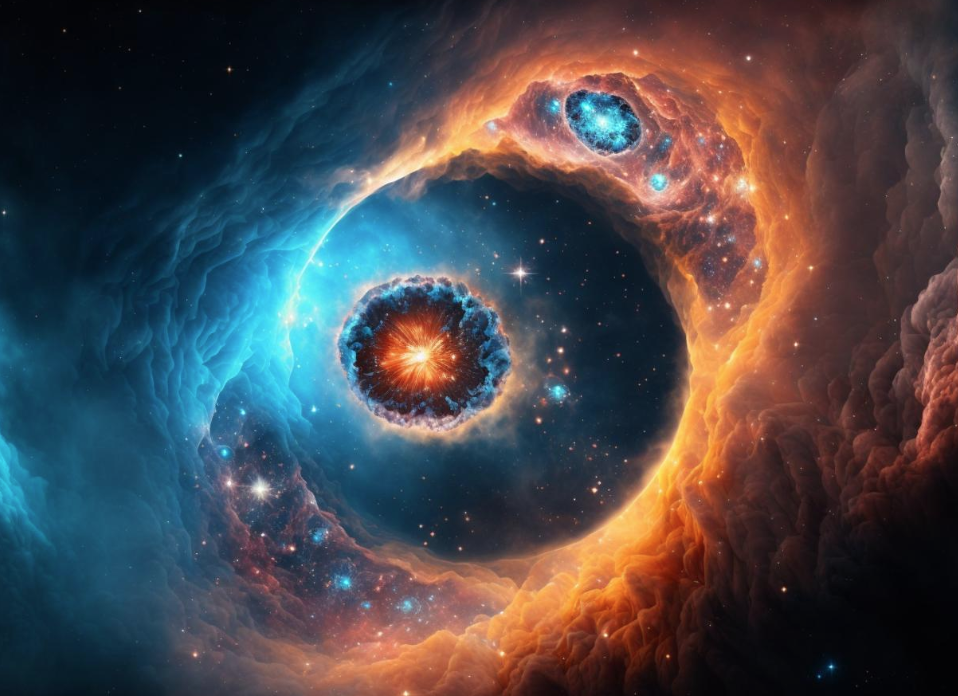Scientists have devised a method for the universe to cease growing, resulting in a ‘Big Crunch’ that resets space and time as we know it.
Will the cosmos end with a whimper or a bang? A team of theoretical physicists has presented a third option: the cosmos may never end.
The scientists discover that cosmic expansion isn’t always a given in a research that aims to clarify the nature of dark energy – a mysterious phenomenon supposed to be pushing the cosmos to expand faster and faster every instant. Rather, they write, dark energy may periodically “switch” on and off, expanding and contracting the universe until the circumstances are suitable for a new Big Bang to occur — and a new universe to be created.
[su_posts posts_per_page=”1″ tax_term=”22834″ offset=”1″ order=”desc” orderby=”id” post_status=”any” ignore_sticky_posts=”yes”]
The fantastic escape
Our universe is now through a phase of uncontrolled expansion, in which the universe becomes larger by the second. Cosmologists don’t know what’s causing this acceleration, which they call dark energy. If this acceleration continues, our universe will eventually expand into nothingness, tearing apart all matter and radiation.
This would not be the first instance of explosive expansion. The energy and densities in the early seconds of the Big Bang were so intense that present physics cannot cope – it predicts a singularity, a point of infinite density where the arithmetic breaks down. The cosmos then went through a phase of extremely fast expansion known as inflation, which is similarly poorly understood.
Astronomers have long questioned if these two stages of accelerated expansion — one in the early moments of the Big Bang and one in the present epoch — are linked, and if an entity that drives both avoids the dilemma of the big bang singularity.
Dynamic demons
To address this, a pair of theoretical physicists released a research on Feb. 7 in the preprint database arXiv(opens in new tab) that analyzed a model of the universe in which dark energy has always played a role. Prior study envisaged dark energy “switching on” at different periods to drive cosmic expansion, but the current research suggests a more realistic model that incorporates matter and radiation.
They sought to investigate if dark energy could prevent a Big Bang singularity, generate inflation, and accelerate the late universe. To prevent the first singularity, the cosmos cannot originate from a point of infinite density. Instead, the world we live in would have to be one of an unlimited number of “Big Bounces.”
Dark energy drives the cosmos until it reaches a specific size in this scenario. The dark energy then changes, pushing the cosmos to constrict. The universe then experiences a large crunch, but just before reaching a state of infinite density, dark energy reverses, causing a period of extremely fast inflation and restarting the cycle.
A finely tuned mechanism
The researchers discovered a dark energy model that achieved the trifecta. Nevertheless, matter and radiation could not exist in the extremely early cosmos because they would have ruined inflation. Matter and radiation had to arrive shortly after inflation when a fraction of the dark energy decomposed, filling the cosmos with light and matter.
While the researchers were initially successful, they were unable to identify a general class of dark energy models that could always provide the same findings. To reach the precise right result, they had to arbitrarily enter a lesser amount for today’s accelerated expansion than quantum physics predicted.
Nonetheless, this new study does point in the right direction, giving a potential foundation for additional research into models like these. Since dark energy may act differently in the long future, humans are not bound to dwell in a cold, empty cosmos. Only more investigation will reveal our ultimate fate.





